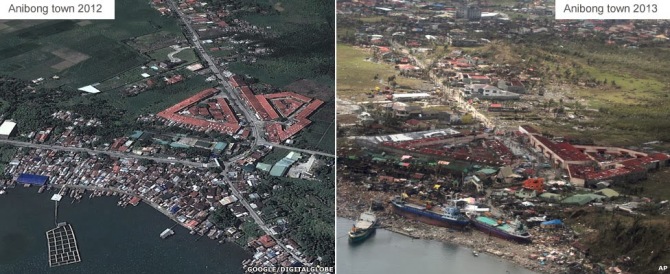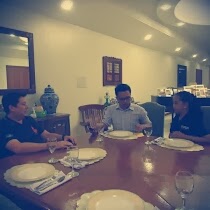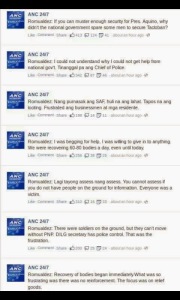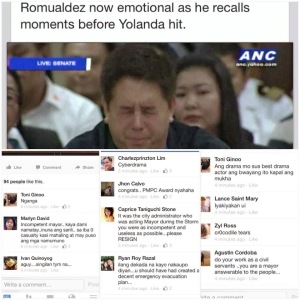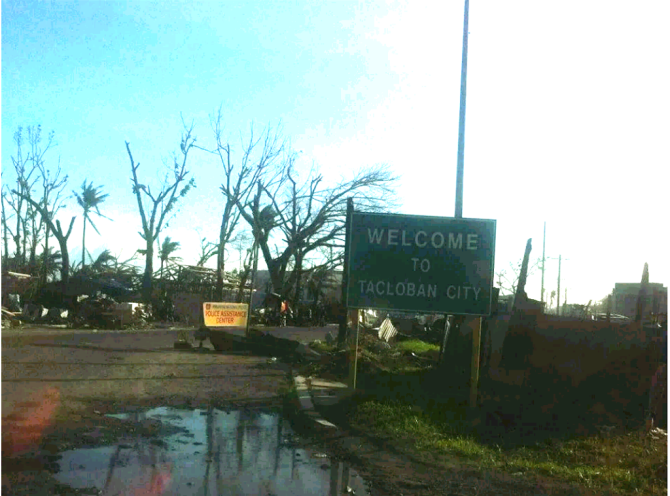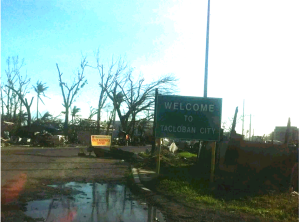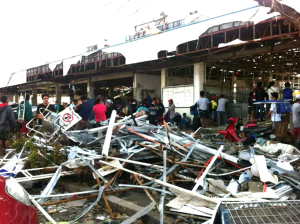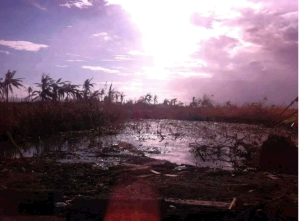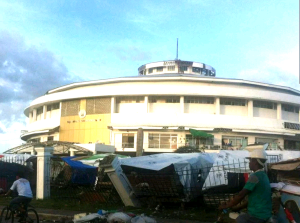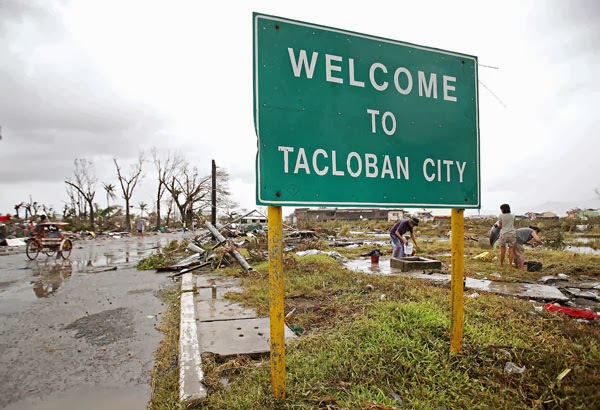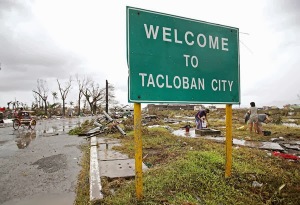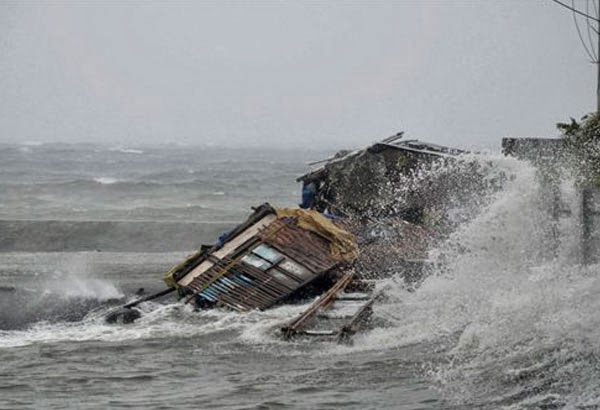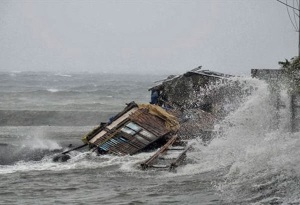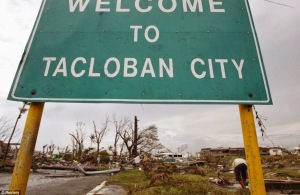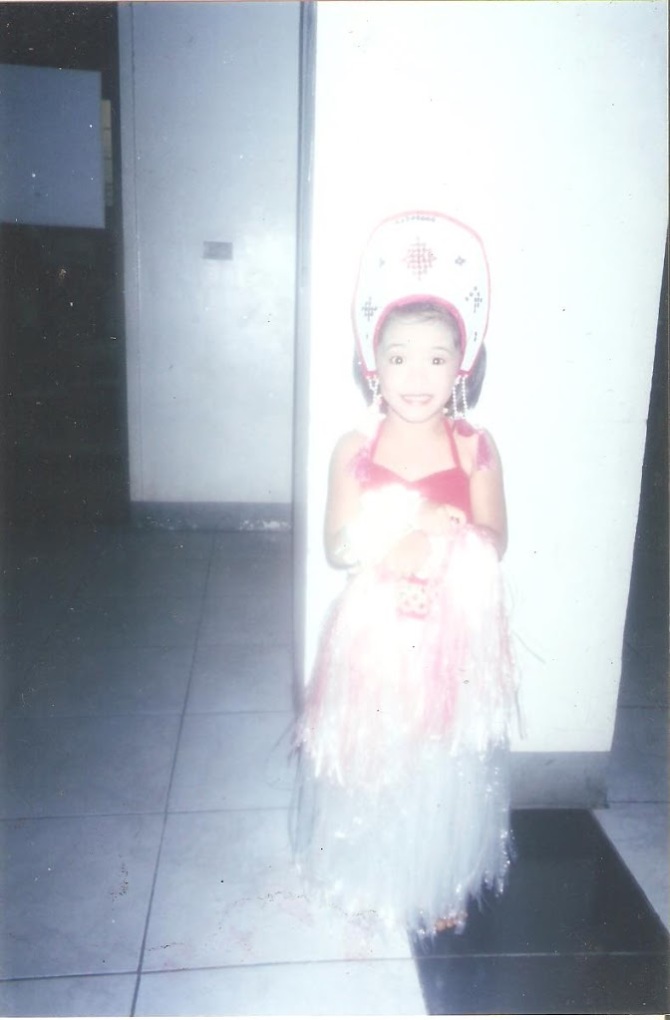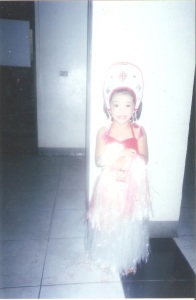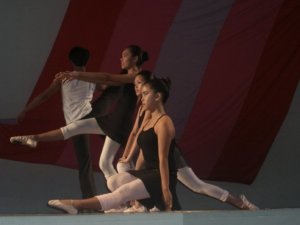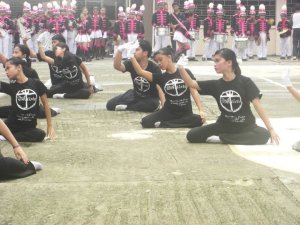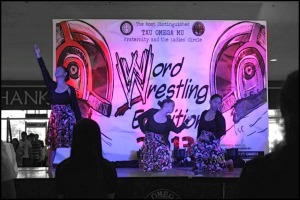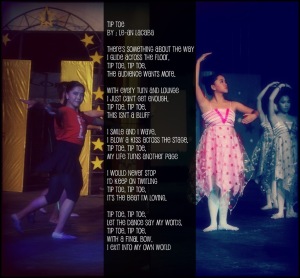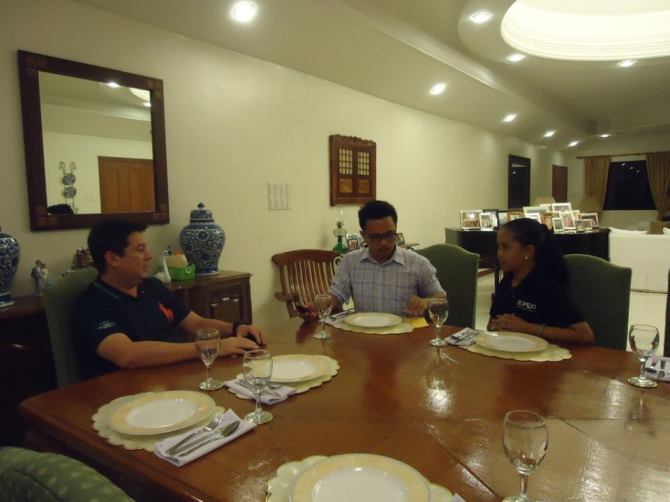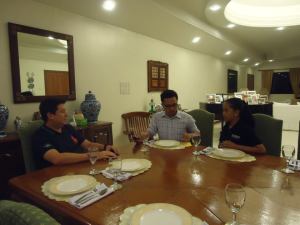I have immersed myself in Tacloban since we came home last Saturday. And here’s my daily routine since the super typhoon Haiyan/Yolanda sashayed into our lives.
SUNDAY
We wake up early, and try to cook and eat in the darkness. Since there is still no electricity and most of the malls have been slaughtered by the hands of man and nature, there are no more places to spend the “Family Day”. We spend it at home, as we make constant repairs to make our home at least look normal. Then we go to church, have dinner and hope to go home before dark. The streets are still unlit, making the usual driving a hassle as we try to avoid bumps on the road. When we reach home, we instantly feel sleepy, as there are no other ways to occupy ourselves. We fall asleep before eight.
MONDAY – FRIDAY
Since I have school, I wake up earlier than normal, and try to cook by flashlight. Once everyone is finished, I take a bath in very cold waters, since the weather has been very gloomy. Then the war for a jeepney begins. Since the storm, Tacloban has lost 50% of it’s public utility vehicles, making the daily commute close to impossible since a lot of us struggle for a ride. Once I do get on a jeep, there is that twenty minute ride, where we pass by Anibong, the village where five boats still stand over houses. When I reach school, after paying twenty pesos(from the normal 15) for my ride, there is the scene of destruction. And with the rain pouring hard, classes are postponed.
So when I don’t have classes, I go to the downtown area. And everywhere, I mean everywhere, you’d see the destruction. Broken windows, roofless buildings, pulverised cement and overturned vehicles. It is really a heartbreaking state, especially for someone used to seeing Tacloban in it’s full life. Now, it looks half dead. There are businesses open, yes, but some are overpriced, and there are a lot of scarce things. There are some streets that have been energised, but not all.
When you try to buy pork, fish or veggies in Tacloban, they’re not only expensive, but you also have to cook them that very day. Since there are no refrigerators (since there isn’t any electricity), you have to cook the food to preserve them.
For those sending packages, you have to wait at least 3 days before claiming them at the post office.
Hot food is a rare commodity, which explains why you have to fight for your favorite kind of bread.
Everything has a LINE. And not just any line, a very long line. To eat at a restaurant, there’s a line. To withdraw from a bank/ATM, there’s a line. To get your package, there’s a line. For relief goods, there’s a line. To get into a hospital, there’s a line. It just shows how abnormal everything is.
When I go home, which is before 4pm, I try to catch a jeep again. And when I do, it’s another ride through Anibong, to the places that were severed by the storm. And when I get home, I try to cook in the dark again, hoping that I wouldn’t cook the food rare or burnt.
SATURDAY
Since it’s the weekend, we all try to do our little own thing. For me, it’s trying to find a power source (since everything needs electricity these days) so I could write on my device. That means going to downtown again.
All this in one week, not to mention the non stop rains and the flooded roads.
The Taclobanons proved themselves to be survivors of this world record storm. If things are hard two months after the storm, what about the first few weeks? They had so little, and had to battle for the survival of their family members and themselves.
The world seems to slowly forget about the city that was once in full bloom, uprooted in three hours. I hope you don’t.
To read more about the Haiyan/Yolanda experience, click here: http://dimperfectprincess.blogspot.com/search/label/haiyan
